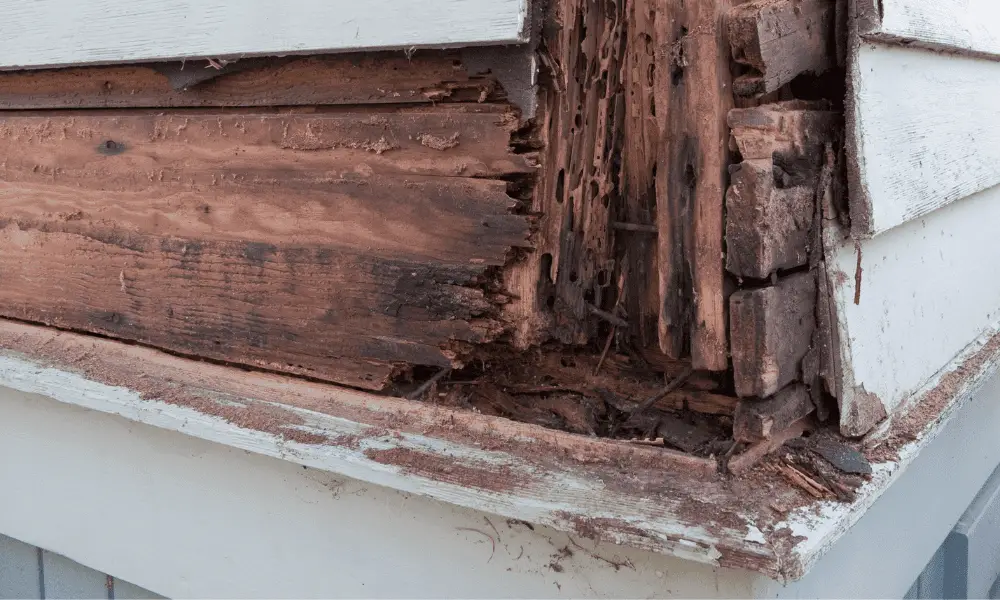Have you ever noticed a trail of ants marching across your patio or the intricate network of tunnels they’ve built between your pavers?
If so, you’re not alone. Ants are industrious creatures and while their level of organization is admirable, it can lead to substantial damage to your outdoor spaces.
These small creatures can undermine the structure and stability of pavers, leading to sinking or shifting that ultimately results in an uneven surface. More than just a nuisance, this ant activity could cause significant safety hazards, especially if left unchecked.
Understanding the Damage Caused by Insects

You wouldn’t believe the havoc those little critters, ants in your pavers, can cause – they’re not just a nuisance; they actually pose a real threat to the structural integrity of your pathways!
These tiny insects are an integral part of insect biodiversity and play critical roles in our ecosystem. However, when they infest the wrong areas, like your beautiful paved paths or patios, their constructive activities can turn destructive.
Ants excavate soil for their nests, creating extensive tunnel systems. When these tunnels are created under pavers, it leads to uneven settling or sinking over time.
Now, let’s delve into pest ecology to understand this better. Anthills aren’t simply dirt piles; they are a complex network of tunnels and chambers that provide shelter and breeding grounds for ant colonies.
The species that typically invade pavers include pavement ants and Argentine ants. They prefer nesting in sandy soil, which is often found underneath paving stones because it’s easy to dig through.
Over time as the colony grows, more soil is displaced from under the paver, causing them to sink or become unstable.
What’s intriguing here is how such small creatures can inflict significant damage over time without you even realizing it initially.
As days turn into weeks and months, you might start noticing cracks appearing on your once perfectly smooth path or patio tiles becoming wobbly all due to these industrious insects’ activities beneath the surface.
So, while we admire their hard work and intricate societal structure from an ecological perspective, it’s important to keep a vigilant eye for any signs of infestation around our homes lest we fall prey to their unintentional destruction.
Recognizing Signs of an Infestation

Just by chance, if there’s a sudden surge in the number of insects observed on your patio or walkway, it might indicate a potential infestation lurking beneath.
Ants are particularly notorious for building their nests under pavers and cement structures, causing significant structural damage over time. In such instances, recognizing signs of an ant infestation becomes crucial to prevent long-term damage.
Here are three key Infestation Indicators that you should be on the lookout for:
Remember, early detection is vital in managing any pest issue effectively before it escalates into something more serious and costly down the line.
While these signs may not confirm an infestation outrightly, they serve as warning bells urging you to investigate further possibly with professional help at hand.
Knowledge is power when dealing with possible pest problems like these – understanding what prompts these tiny invaders’ actions gives you an edge in combatting them successfully while preserving the aesthetic integrity of your outdoor spaces.
Keep these signs top-of-mind next time you’re enjoying those summer evenings on your patio – vigilance paired with informed action can save you much trouble down the line!
Natural Remedies for Pest Control

Let’s not forget the power of natural remedies when it comes to tackling pest control! Using herbal repellents and organic traps can be a highly effective, eco-friendly way to deal with ants in your pavers.
Herbal repellents like peppermint, cinnamon, and clove oil are known for their strong repelling properties against ants. When these oils are sprinkled around areas where ant activity has been noticed, they create a natural barrier that ants find difficult to cross.
Next on your list should be organic traps. These can be made at home using simple ingredients such as borax mixed with sweet, sugary substances like honey or syrup.
The sweet lure attracts the ants, while the borax effectively eliminates them. Keep in mind though, that these traps should be placed strategically near ant trails but away from pets or small children, as borax can be harmful if ingested or touched excessively.
As you wage this natural war against the tiny intruders, remember vigilance is key. Regularly inspect your pavers for signs of renewed infestation and act swiftly at any indication of a comeback.
Rotate between different types of herbal repellents since ants may grow accustomed to one type over time. Similarly, change up your choice of sweets used in organic traps so that the cunning creatures don’t wise up to your tactics too quickly.
Remember: nature is on your side in this battle, and armed with knowledge and patience, you have all it takes to reclaim your paver spaces from those pesky ants!
Professional Pest Control Solutions

Sometimes, despite your best efforts, those persistent pests just won’t back down and it’s time to call in the professionals.
Commercial exterminators are experts at dealing with stubborn infestations like ants in pavers. They have advanced tools and techniques at their disposal that can effectively eliminate these nuisances from your property.
More importantly, they understand the behavior of different pests, which enables them to target the problem more accurately.
Professional pest control solutions often involve a combination of strategies:
Pre-treatment assessments:
- Identifying the species of ant causing trouble
- Pinpointing entry points and nest locations
Chemical treatments:
- Using insecticides that aren’t readily available to consumers
- Applying treatments in specific concentrations for maximum effectiveness
It’s essential to remember that commercial exterminators employ chemical treatments judiciously. They use chemicals only when necessary and apply them in a manner that minimizes harm to non-target organisms and the environment.
Also, many professional pest control companies offer maintenance services where they periodically check your property for any signs of re-infestation.
There’s no need for you to wage this battle alone when there are qualified professionals ready to help. With their specialized knowledge and resources, they can provide efficient solutions while ensuring safety standards are met or exceeded.
So next time you spot an army of ants marching across your pavers, don’t despair: reach out to a professional pest control service instead.
Remember, it isn’t just about getting rid of an immediate annoyance; it’s also about protecting your property from potential structural damage caused by these tiny invaders.
Preventive Measures for Future Infestations

Now that those tiny marauders have been vanquished, it’s time to fortify your castle against future invasions. The key is being proactive and implementing preventive measures before ants find their way back into your pavers.
One such measure is Barrier Installation – a method involving the creation of physical or chemical barriers that deter ants from infiltrating your home.
For instance, you can install a gravel or stone barrier around the perimeter of your home, which makes it difficult for ants to cross over and invade your space.
Next on the line are Chemical Repellents; these are substances designed to discourage ants from entering specific areas. These repellents work by interfering with the ant’s sense of smell, making it harder for them to track food sources and communicate with each other effectively.
However, remember that while most commercial chemical repellants are safe for humans and pets when used correctly, they should still be handled with care. Also, always follow instructions provided by manufacturers when applying these repellents.
Keep in mind also that regular maintenance is crucial in keeping ant infestations at bay. Ensure cleanliness in all areas of your house, especially those where food is prepared or consumed – as crumbs left behind can attract an army of ants in no time!
Sealing gaps around windows and doors can further limit entry points for these pesky critters.
With consistent efforts combined with professional pest control solutions like barrier installation and the use of chemical repellants, you’ll stand a great chance at keeping those tiny marauders out of sight permanently!
Conclusion
You’re not alone in your struggle with ants. In fact, a study by the University of California revealed that 85% of homes have had issues with ant infestations. That’s an alarming figure!
Don’t let these little invaders wreak havoc on your beautiful pavers. With the right approach – be it natural remedies, professional help, or preventive measures – you can effectively keep these pests at bay.
Remember, a pest-free home is possible and absolutely within your reach!




